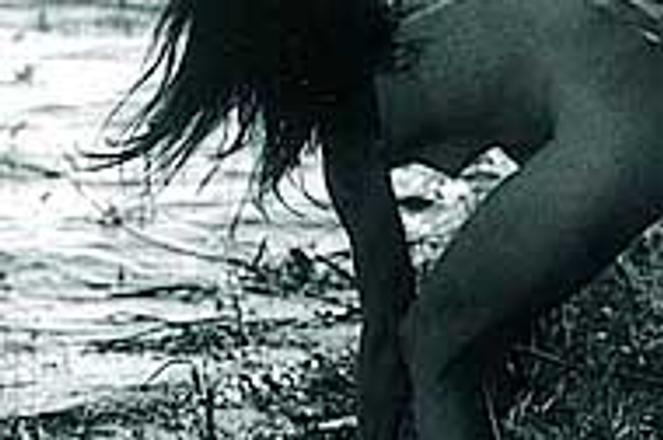STANO'S photograph Thou Shalt Not Kill.photo: Tono Stano
A PHOTOGRAPH of a woman wrapped in black fabric with only her face and a thin line of her naked body revealed launched Tono Stano's career as a photographer. Entitled The Sense, the photograph was bought by Metro-Goldwyn-Mayer studios and used as a poster for the film Showgirls.
Stano's artistic domain has always been black-and-white art photography and his new exhibition, which is on display in Bratislava as part of the Month of Photography event is no exception. He works with both male and female models often posing in acrobatic positions that celebrate the beauty of the human body. The only difference between this and his previous work is that with this project he has moved out of his studio, taking photographs in an open landscape.
"It may seem that my models have perfect bodies but nobody is perfect. I think I choose average people. They are not mutilated, but they are no beauties either. I don't want the viewer to be concerned about whether somebody is a cripple or that he is old. I want my pictures to look like the photographs in a book on anatomy or a fine art book," says 42-year-old Stano.
His nudes are not just aesthetic works of art; Stano takes them further than that. He often makes them tell a story.
"If I want a picture to 'have a life' and to radiate energy, it has to be done in a way that people can connect their own story to it. It has to be a photo that you can make part of your own 'album of life'. If it doesn't fit in, you won't like it," explains Stano.
Despite the fact that Tono's nudes may, for some, tread the fine line between erotica and smut, he has never worried about people considering his photographs vulgar or pornographic.
"That's not something I would bother about. I do things according to my conscience and the way that I think they should look. How people perceive them depends entirely on their personality," he says.
In his Prague studio Stano is currently working on 11 portraits of Czech and Slovak artists who have shaped the theatrical scene since the 1960s. Stano moved to Prague from a small village in Slovakia and, as he says, it never occurred to him to return home after he completed his studies in the Czech capital.
"I had nowhere to go back to. I come from Malé Vozokany and opening a photo studio there would have been silly. I would have taken pictures of all the villagers in two days and then what?" Stano laughs.
The exhibition can be seen at the Dom umenia (House of the Arts), Námestie SNP 12, Bratislava. Open daily 12:00-19:00 until November 22. Admission: Sk60 (also includes entrance to six other exhibitions in the same venue).


